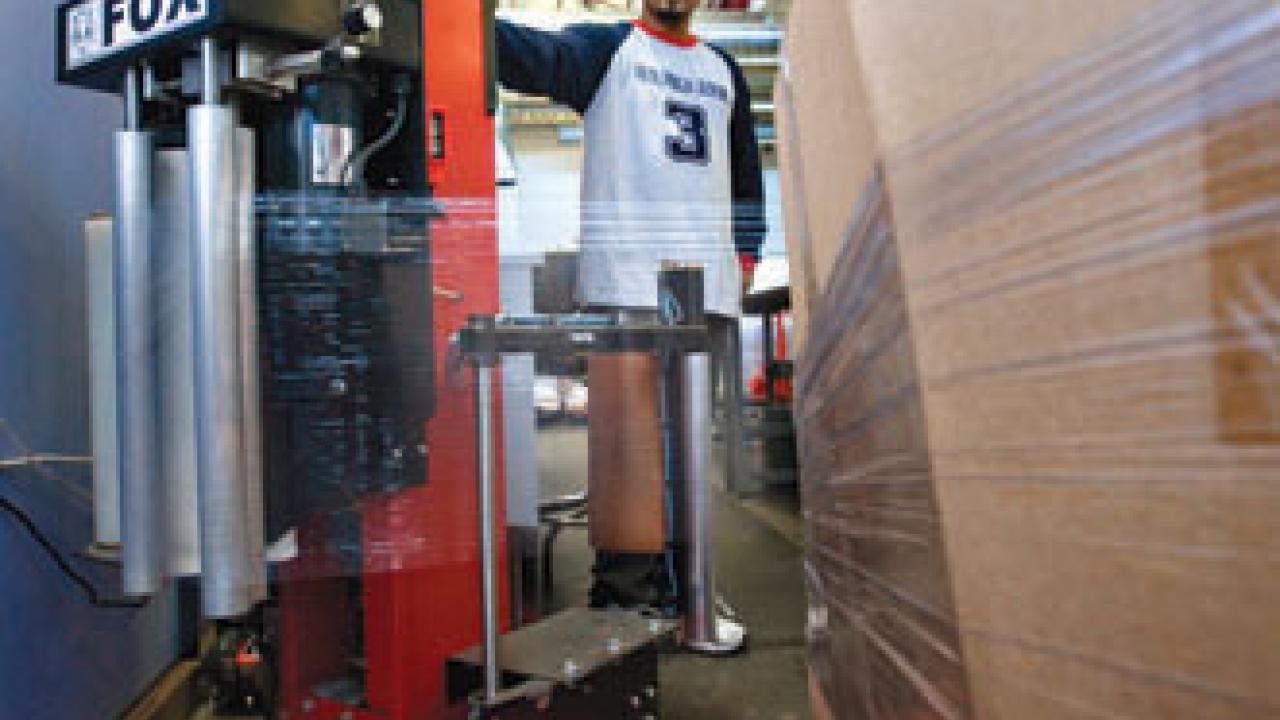UC Davis is helping its employees Be Smart About Safety, with the right equipment, tools and training for the job.
The university's goal is fewer work-related injuries and a corresponding reduction in claims to the UC system's self-run workers compensation program.
The Davis Campus sees 700 to 800 injuries a year, said Bob Wachter, injury prevention specialist. "And they're going to keep happening unless we proactively take action," he said.
The UC system is accomplishing this with Be Smart About Safety. On the Davis Campus, the program has paid for such items as hand trucks for gas cylinders; three-wheeled carts for 55-gallon drums; desk movers; hoists and lifts; and motorized roll-up doors.
The program even paid for a snowblower for the university's Tahoe Environmental Research Center. "That's a back injury waiting to happen," said Wachter, referring to the potential for an employee to hurt himself or herself while shoveling snow.
Altogether, for the Davis campus in 2007-08, Be Smart About Safety paid for $714,700 worth of nonoffice equipment and $58,000 for ergonomic improvements in individual office spaces. The program pays 100 percent of the cost of nonoffice equipment and 50 percent, up to $500 per employee, for ergonomics.
Compare that expense to workers compensation claims averaging a total of $3 million to $4 million annually over the last three fiscal years on the Davis Campus.
"We hope to see a good return on our investment," Wachter said.
Work-related injuries and illnesses in the first two months of this fiscal year, July 1 through Aug. 30, numbered 76, down from 123 for the same period a year ago -- a 38 percent decline.
Be Smart About Safety is too new to draw any definitive conclusions about its role in the decrease, but the program certainly played a part, Wachter said. The program, funded by an assessment on every department's payroll, is in its third year.
In any event, sustainable improvement may take some time, Wachter said, because Be Smart About Safety is as much about changing behavior and managing our personal risk as it is about training and new equipment.
"It's about getting people to learn how to lift properly, for example," he said.
And sometimes it is about getting people to slow down. "You put yourself at risk when you are rushing on the job," he said. Other risk factors are frustration, fatigue and complacency.
Strains and sprains -- to neck, back, shoulders, knees and elbows -- account for the majority of injuries on campus: 783 from 2005 to 2008, costing $1.5 million to $2 million in workers compensation claims. Some cases can continue for years, further adding to the cost.
"A back injury can cost $50,000 to $300,000 long-term," Wachter said, whereas a new hand truck can cost $80 and prevent the injury to begin with.
One hand truck he promotes is built with a second set of wheels, called "kick-back legs," that support the hand truck's structure when it is loaded.
Wachter has numerous catalogs filled with such pieces of innovative equipment, and he relishes the opportunity to visit workplaces around campus to see if they could benefit from all the products on the market.
The Veterinary Medicine Laboratory Facility, for example, asked for help with its equine surgery table. It has wheels, but it is very difficult to move: One person and probably two are needed just to set the empty table in motion, and three to five people are needed to move the table with a horse on it.
With Wachter's help, the VMLF is trying out an electric Cart Caddy, on loan from the California National Primate Research Center, which uses the device to move cages.
Now the VMLF is asking for its own Cart Caddy, in a formal request to Wachter and the campus's Be Smart About Safety Committee.
Of course, machines cannot do everything, which is why Wachter and Buster Porter of Occupational Health Services teach people how to lift, push and pull properly, and how to stretch before taking on strenuous assignments.
"We're reducing risk and thereby reducing injury potential," he said. "And, let's face it, some of this new equipment can bring about improved efficiency, too.
"And people who can do their jobs easier are going to have better morale."
Be Smart About Safety is a win-win proposition, Wachter said, for UC and its workers compensation fund, and for university employees. All they need to do is get in touch with him, for training and consultation.
MORE INFORMATION
Environmental Health and Safety (for ergonomics)
Wachter can be reached at (530) 297-4605 or rawachter@ucdavis.edu.
Media Resources
Clifton B. Parker, Dateline, (530) 752-1932, cparker@ucdavis.edu
